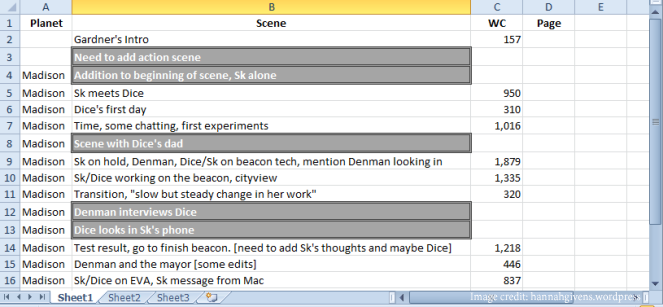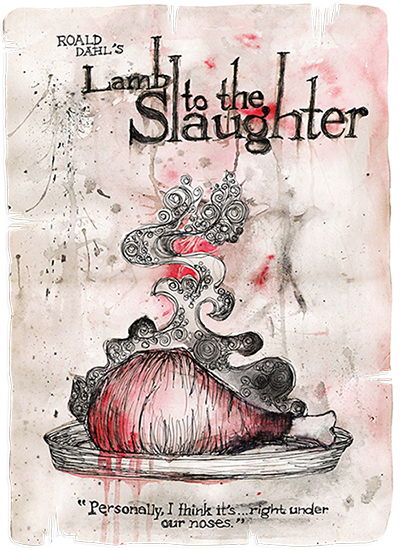The Art of Writing Short Stories: Practical Tips for Beginners
Writing short stories is an excellent way of getting started as an author, whether you’re crafting tales for adults or children. It gives you the perfect space to experiment, refine your voice, and tell impactful stories in a concise format—all without the daunting task of tackling a full-length novel.
But what makes short story writing truly captivating and memorable? That is what we’ll discuss in this article, as we explore the key elements and share top tips to help you craft tales that readers can’t put down.

What Is a Short Story?
A short story is a compact narrative that captures a single idea, moment, or conflict. This single element usually unfolds within a brief span of time. Additionally, short stories tend to focus on a few characters and a central theme to deliver an impactful message or emotional experience, using concise and vivid language.
Unlike novels, which include complex storylines, short stories are snapshots of life, often leaving room for readers to interpret meaning beyond the written words. Their brevity can challenge writers to make every word count so that their story resonates long after it’s read.
How Long Are Short Stories Usually Are?
Short stories are typically brief enough to be read in one sitting, with lengths ranging from 1,000 to 7,500 words. The exact length depends on the depth of the narrative and the medium in which it’s published.
There is also a short version of this form that rarely exceeds 1,000 words and is known as flash fiction. But if a story stretches beyond 10,000 words, it moves into a different category. These longer works are known as novelettes or novellas, sitting somewhere between short stories and full-length novels.
| Category | Word Count |
| Flash fiction | 1,000 words max. |
| Short story | 1,000 – 7,500 words |
| Novella | 10,000 – 20,000 words |
What Are the Main Elements of a Short Story?
A short story is built around some essential elements that work together to deliver a powerful and engaging narrative. Each of these elements has to be carefully crafted in the story, to ensure that every word, detail, and moment is purposeful. These elements are:
- Characters: At the center of any short story are its characters, who may be few in number but are brought to life with distinct personalities, desires, and challenges. Writers often make these characters deeply relatable or intriguing so that they can draw readers into their world.
- Setting: The setting is the backdrop of the short story. Whether it is a specific place, time, or atmosphere, it sets the stage for the events to unfold.
- Plot and conflict: Think of the plot as the backbone of the short story–it guides the reader through a series of events that unfold around a central conflict. This conflict, whether internal (a character grappling with emotions or decisions) or external (a challenge or obstacle they must face), drives the story forward and gives it purpose.
- Theme: Beyond the surface of the story lies a deeper meaning or message that you want to resonate with your readers. This deeper meaning is known as the story’s theme, and it is what gives the narrative its universal appeal.
- Point of view: The perspective from which the story is told shapes how readers engage with the plot and characters. Whether it’s the intimacy provided by a first-person pov or the objectivity of the third-person pov, the one you choose to narrate your short story can add depth and focus to the storytelling.
- Style and Tone: A short story’s language, pacing, and mood define its personality. From lyrical prose to sharp, minimalist dialogue, your short story’s style and tone can establish an outstanding emotional and aesthetic experience for your readers.
Important read: Elements of Fiction: A Quick Guide to Writing the Perfect Story
How to Write a Short Story
Now, let’s explore some practical steps to help you craft a unique short story. While these tips are meant as guidelines, feel free to adapt them to suit your creative process. Here’s what you need to do:
1. Start with a Catchy Idea
Although an interesting idea is important in all books, it’s even more important in short stories due to the concise length. That is why your short story’s idea must grab the reader’s attention almost from the first sentence. This idea will then run throughout the story. It can be a completely novel idea, or a simple take on an everyday event.
It’s important to remember that, in short stories, the events take place within a short time period, maybe over one day or even less. Whereas this may seem very limiting, it does mean you have to pick up on little details and human reactions that fill the story out.
Think of Roald Dahl‘s bizarre short story “Lamb to the Slaughter” (the title is also a great pun on the English proverb “Like a lamb to the slaughter”). A wife kills her husband, who threatens to divorce her, with a frozen leg of lamb and then serves it up, cooked, to the unsuspecting investigating policemen.
2. Come Up with Interesting Characters
There’s no better place to look for inspiration for your character than by looking at the people around you, or the people you meet. It’s the perfect opportunity to people watch, studying their mannerisms, patterns of speaking, as well as the way in which they interact with others. Don’t forget the small things (like little movements of the hand, manners of walking, or manners of speaking and pronunciation) that produce the most believable characters.
It’s also important to know way more about your characters than the readers do, even if you don’t place too many details in the story itself. The most important character elements you need to give readers are: at least some of the character’s appearance; illustrating your character’s personality by showing how they act (using adjectives alone isn’t enough); and getting your character to speak – which gives you a window into the character’s mind.
3. Craft an Intriguing Plot
A good story needs a good plotline – and a bit of planning goes a long way in making writing easier. A plot can be created by following a very simple structure:
- The hook: This needs to be in the first paragraph to grab the reader’s attention. It can be a notable event or problem that resonates with your readers, drawing them into the story.
Important read: 15 Important Tips On How To Write A Hook
- Conflict: As we mentioned earlier, you need a conflict that gives your short story purpose. It can be the rising action of your short story, where tension between a character and their “internal voice” or tension between characters starts to appear.
Important read: What is Conflict in a Story and How to Write One
- Climax: This is where you deliver a turning point as the conflict reaches its peak, often leading to a revelation or a decisive action.
- Resolution: You get to finish the story, giving readers a round-up of how things ended. This is also a great time to use a cliffhanger – you can leave readers wondering if the conflict and tension really have been resolved.
4. Select a Point of View
As a writer, you need to decide who is going to tell the story and how much information they can reveal to your audience. The point of view you choose not only shapes the narrative but also subtly influences how readers perceive the characters. A first-person narrative pulls readers directly into the protagonist’s mind, offering a personal and intimate perspective, but it can be limiting as the story is confined to one character’s viewpoint.
Less commonly used, the second-person narrative treats the reader as a character in the novel, which can create a unique and immersive experience. The third-person point of view, on the other hand, provides greater flexibility. It allows the narrative to be told either from multiple perspectives or through the perspective of one character.
5. Create a Scene List
Think of this as a storyboard, much as directors use scene boards. Although you can start writing and then create the scene list later on, having one at the beginning does have several benefits.
Not only will you get to see the strengths and weaknesses of your plot before you start writing, but it’ll also make it far easier when you actually come to write the story! You’ll get a better overview of the basics of the story as it unfolds, ensuring you don’t diverge away from the plan. And just like unnecessary scenes are cut from a film’s final reel, any scene that doesn’t add anything beneficial to the story’s plot needs to be scrapped.

An added benefit of a scene list is that you will be able to see the story with all its most basic elements without any unnecessary content.
6. Determine Where to Start
Don’t make the mistake of starting too far back in time; it may work fine for a novel, but short stories need to get to the point quickly. This means diving straight into the thick of the action.
Because of the length of short stories, you shouldn’t have to spend a good chunk on the introduction. Instead, you need to create a well-developed plot that stands up on its own without needing an extensive setup.
This also means coming up with well-developed characters and subtly introducing any background story into the plot if needed. Starting in the heat of the action keeps the plot moving and allows you to conclude the story sooner. Moreover, you can also use flashbacks to insert past events into the story to give more context.
7. Revise and Remove Unnecessary Details
It goes without saying that writing short stories isn’t the same as writing novels. That’s why you have to make sure you get straight to the point, writing in condensed sentences and choosing your words very carefully. As a by-product, this also means you’ll have to develop your self-editing skills, as you’ll be cutting out all unnecessary words and details.
This is where the scene list comes in handy, as it helps you to plan your story very well – and stick to the major points. There is little room to spare to wander off on extra details, especially if they are irrelevant to the story.
Important read: How to Edit a Book for Publishing
Great Short Stories to Learn From
If you’re learning about writing short stories, it’s helpful to read works from a variety of genres and styles. For that reason, we have put together some recommendations that can inspire and teach a lot through their structure, character development, and storytelling techniques:
- “The Tell-Tale Heart” by Edgar Allan Poe: This masterful psychological thriller immerses readers in the obsessive mind of the narrator as he attempts to justify his crime. The way tension and guilt are conveyed through rhythm and repetition makes this a must-read for understanding suspense.
- “The Necklace” by Guy de Maupassant: A moving tale of a woman who borrows a necklace to appear wealthier than she is, only to face life-altering consequences. Maupassant’s amazing ability to use irony and concise storytelling highlights how small choices can lead to dramatic outcomes.
- “To Build a Fire” by Jack London: This short story vividly portrays a lone traveler in the Yukon battling the unforgiving forces of nature. It is a great example of how setting can play an important role in the story, as the author uses vivid imagery to showcase the tension between human pride and natural power.
- “The Selfish Giant” by Oscar Wilde: In this symbolic story, a giant’s garden becomes barren after he selfishly shuts it off from children, but it blooms again when he learns to share. This simple, heartfelt prose demonstrates the power of fable-like storytelling to convey universal messages of kindness and redemption.
- “The Secret Life of Walter Mitty” by James Thurber: This humorous and relatable story follows an ordinary man escaping his mundane life through vivid daydreams of adventure. The author’s transitions between reality and imagination show how to use humor and inner monologue to create a memorable character.
Conclusion
If you’re new to writing, short stories can be a great starting point. These smaller works allow you to discover your unique style and explore your favorite genres – and they can act as the springboard to larger writing projects. Just don’t be afraid to bend the rules and experiment—your best-selling masterpiece could be just one bold idea away!
.
Read more
How to Use Generative AI to Write Compelling Short Stories
What Makes a Good Villain? + Checklist to Help You Write Your Own
How to End a Story: Dos, Don’ts, and Examples


















Dr.Muhammed Farooq Khan
February 23, 2017NEED DOWNLOAD OPTION.
Kotobee
February 28, 2017If you are referring to Kotobee Author, all download options are here: https://www.kotobee.com/pricing
Jennifer Welch
May 27, 2025This article is really helpful for beginners like me! The tips on creating strong characters and starting with a catchy idea are especially useful. Thanks for breaking it down so clearly!